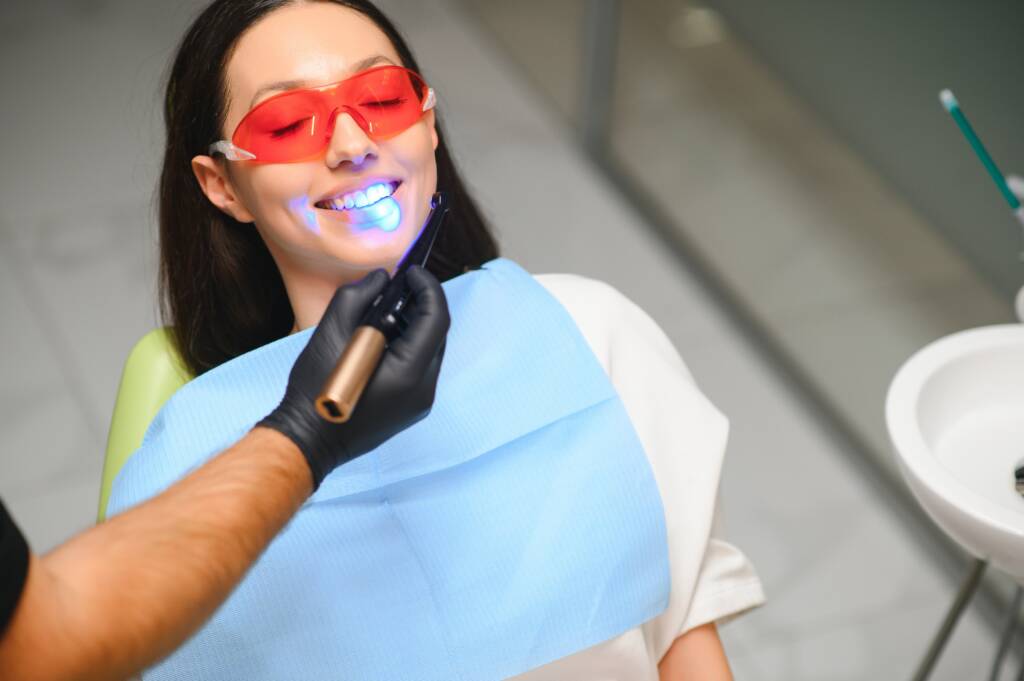
TEETH WHITENING is a procedure performed to remove unnaturally darker teeth due to enamel and dentin, as well as discoloration resulting from various causes.
Teeth whitening can achieve several shades of whiter color without harm. The materials used during teeth whitening are for professional use and are applied with specially formulated medications after a dental examination. Cosmetics sold in cosmetics that are not applied under the supervision of a dentist are quite ineffective and can damage dental structures.
Stains from food residue, tea, coffee, smoking, and brushing habits are removed in the office through tartar and plaque removal and subsequent polishing. After these procedures, the teeth are ready for teeth whitening.
Whitening is performed in two ways:
At-Home Whitening (Applied at Home):
This is a method you can perform at home under the guidance and instructions of your dentist. A personalized whitening tray is created using an impression of the patient’s mouth. Water-based whitening medication is placed inside the tray before going to bed at night, and the tray and medication are left in the mouth overnight to whiten the teeth. This process lasts for 7-10 days, depending on the amount of whitening and the desired results.
In-Office Whitening (Applied in-Office):
This whitening procedure is performed by a dentist when rapid whitening is desired. The gums are isolated, medication is applied to the teeth, and the blue light used in irradiated fillings is applied to the teeth to increase the effectiveness of the medication. The procedure is completed when the desired whiteness is achieved after repeated sessions. However, recent research recommends continuing at-home whitening as a supplement after in-office whitening.
What Should You Consider During Whitening Treatment?
Whitening should be performed under the supervision of a dentist and with strict adherence to instructions. Decay, cracks, and broken areas on the teeth can cause the chemicals used to affect them and cause damage. These types of dental problems should be addressed before the whitening procedure. During the whitening process, coloring foods such as tea, coffee and cigarettes should be avoided, and regular brushing and care procedures should be implemented carefully.

